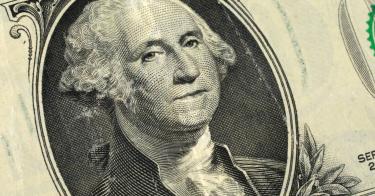The Great Recession taught a sobering lesson. The government cannot spend its way into prosperity. At best, stimulus measures are ineffective. At worst, they can delay the recovery and prolong financial hardship.
As states across the country begin to reopen, lost jobs, business failures, and scared consumers will increase the pressure on Congress to do more. Bipartisan infrastructure bills are already being floated. Some lawmakers are clamoring for even more stimulus payments for Americans. Congress is also debating a $1 trillion boost for state treasuries to keep government spending elevated in this misguided attempt to support the economy.
Congress should not heed the siren song of stimulus spending. Instead of searching for expensive ways to prop up the economy, lawmakers should pursue cheaper effective reforms that let the economy grow sustainably, which means removing existing barriers. Jettisoning onerous regulations, licensing rules, and mandates will allow businesses and workers to adjust and pursue opportunities as the economy restarts across the country.
For stimulus spending to work, new government programs must add to, rather than crowd out, private sector jobs. That is not what happens. The evidence is clear that stimulus spending shrinks private sector jobs. After the 2009 infrastructure stimulus, a survey of construction firms found that stimulus projects went to businesses that were already busy, and many of them had subsequently turned down private sector jobs in favor of more lucrative government contracts. Only 4 percent of workers at subsidized firms had been rehired from the ranks of the previously unemployed.
Most jobs, especially construction jobs for infrastructure, require training and skills to be safe and effective. Instead of training unemployed workers to expand payrolls, federal contractors often hire skilled workers from the private sector at inflated wages. The temporary influx of money will simply shift resources within the industry instead of actually expanding it.
By shifting resources, government spending can destroy jobs and shrink private sector growth. It is also a massive waste of taxpayer dollars. The 2009 stimulus channeled over $500 million to Solyndra only to have the solar manufacturer go bankrupt. Smaller projects, like a Nevada biomass electricity plant, closed as soon as the federal funds had dried up.
Temporarily pushing businesses and workers to respond to government priorities creates new costs when the public funding ends and industries must reshuffle to meet private sector demands. Direct cash payments to individuals are equally ineffective at boosting the economy. All those tax rebates and stimulus checks issued in 2008 and 2009 did not change the broad measures of consumer demand. We saw no evidence of increased aggregate consumer spending as a result of federal cash handouts.
The similarly motivated “cash for clunkers” program, which subsidized new vehicle purchases, moved vehicle purchases up by a few weeks or months, but did not encourage people to buy more cars than they had planned to before the subsidy. The list of stimulus failures goes on.
Do not forget that such new spending has to come from somewhere. If the government taxes or borrows one dollar from Americans, that is one dollar less they have to spend or invest. The tradeoff with fiscal stimulus through stimulus spending is a choice between private activity or public activity. As one economist explained bluntly, “We can build roads instead of factories, but fiscal stimulus cannot help us to build more of both.”
Congress has already committed more than $2 trillion for the coronavirus. The Federal Reserve has added many trillions more. Much of the relief was intended to serve as a floor on which the economy and society could rest while nonessential activities and businesses were banned in an attempt to contain the pandemic. But this spending will still impose costs, distorting incentives and shifting private activity away from meeting the demands of consumers in the economy and toward those of federal bureaucrats.
As the stay home orders are lifted and the nation begins to adjust to the new normal, Congress cannot continue to shovel so much money out the door. Spending billions or trillions more taxpayer dollars on fiscal stimulus produces high costs and dubious benefits. Lawmakers would do far better by removing all those unnecessary mandates and regulations that prevent businesses from hiring additional workers or creating new products.
After the Great Recession, the people touting expensive stimulus plans promised a shorter and less painful downturn. More than a decade later, we now know those were empty promises. Congress should not repeat the mistakes of the past on the road to recovery from this downturn.
This piece originally appeared in The Hill on 5/12/20



